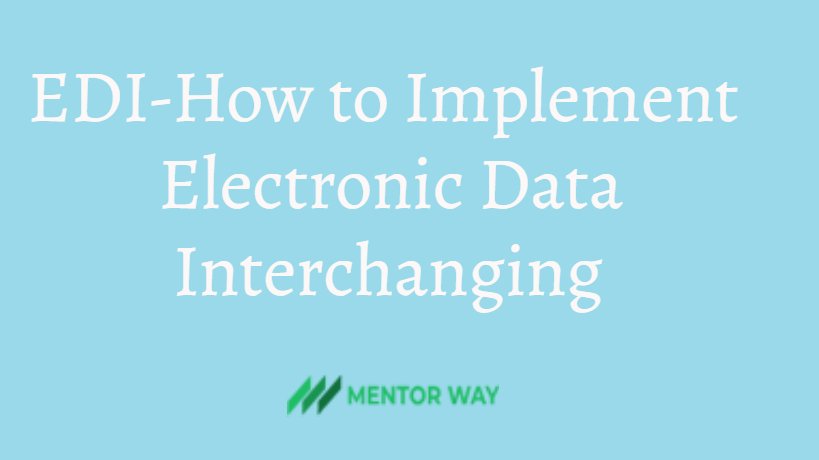EDI-How to Implement Electronic Data Interchanging
2 min read
EDI may be defined as the transmission of business data in a structured, electronic format from a computer application in one business format from a computer application in one business to a computer application in another.
The transfer can be done through a direct computer link or through a modem in telecommunication network. Electronic Data Interchange is a communication between applications, it can occur between computers if each of them can accept identical data formats.
EDI implementation starts with an agreement between a company and its trading partner. The two parties decide:
- The standard (ANSI X.12 Or UN\EDIFACT) that will be used.
- The nature of the information to be exchanged (invoice, payment order, remittance)
- The network carrier or value-added network.
- The mode of information transmission.
An efficient EDI system requires that the data be input only once, and the system manages the rest. In other words, the data moves without much intervention to the trading partner’s application, with no additional steps to slow the process.
To achieve this, both parties exchange messages based on a structured format has been agreed on by the exchanging parties. These messages are exchanged by means of electronic transfer between autonomous computer application systems of the involved trading partners.
EDI relies on the use of standards for the structure and interpretation of electronic business transactions. All trading partners must use a common standard in order to reduce errors and ensure accurate translation of data regardless of the computer system involved.
The basic kit necessary for EDI implementation includes the following:
-
Common EDI Standards:-
The common EDI standards provide the syntax and standardization to the business language. EDI standards basically specify transaction sets- complete sets of business documents such as invoice, a purchase order, or a remittance advice.
-
Translation Software:-
The translation software sends messages between trading partners, integrates data into and from existing computer applications and translates among EDI message standards.
-
Trading Partners:-
Trading partners are a firm’s customers and suppliers with whom business is conducted.
-
EDI Value-Added Network (VAN) Services:-
A VAN is a third party service provider that manages data communications networks for businesses that exchange electronic data with other businesses.



